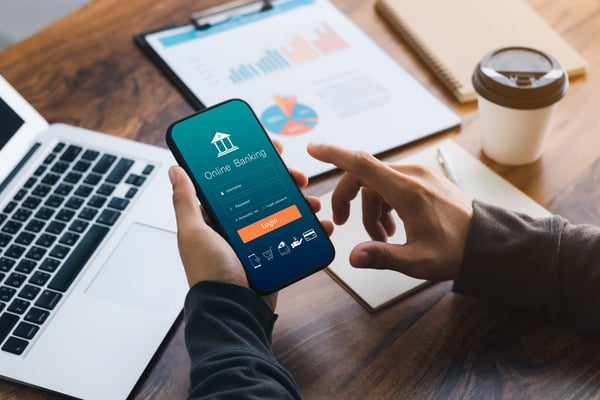Wednesday is the 33rd anniversary of the Americans with Disabilities Act, or ADA, in the United States. So, I want to consider how the ADA, technology, and digital accessibility have positively changed my life.
As a recent college graduate in my mid-20s, so much of what I do in my professional and personal life would not be possible without the vast array of accessible technology. Perhaps the best part is that digital accessibility and inclusivity give me independence that might otherwise be unattainable.
Keep reading as I attempt to contrast the life of someone like me 30 years ago with my present-day life. It may be surprising how much has changed thanks to technology, digital accessibility, and the ADA. There is a lot to say, so I'll focus on three key areas: finances, communication, and shopping.
I can only write from my perspective, but feel free to share your thoughts with me and our other blog readers in the comments on this post.
How I manage my finances as a blind person
One of the most significant areas of technology in which digital accessibility required by the ADA has had the most considerable impact is banking and personal finance management. Even twenty years ago, managing monetary resources as a blind person would have been challenging. Digital accessibility mandated by the ADA has made it much easier.
Keeping track of cash was a struggle because bill identification relies on visual perception. Using a bank account was no walk in the park either. Transportation to and from the bank was a potential concern. Once at the bank, most of the experience considers only sighted individuals. Depositing checks through a mobile application did not exist. Customers were required to physically fill out and sign personal paper checks for deposit, which had apparent limitations for blind people. Depositing and withdrawing cash was not very accessible either. ATMs differed from what they are today regarding reach and number of features.
Standard practices like filling out print deposit and withdrawal slips would have been impossible for people like me. Managing my money 30 years ago would have been challenging with few potential solutions. I would have had to rely on the help of a sighted person for almost everything related to banking which would have drastically limited my independence.

Nearly all of this has changed thanks to new technology and the required digital accessibility of that technology as mandated by the ADA. I can receive payment via direct deposit. If a paper check comes my way, I can take out my iPhone, open the screen reader-accessible banking application, and deposit my check without vision-related difficulty.
If I have to go to a bank, a simple pair of headphones allows me to access screen reader mode at almost any ATM. If I am handling cash, a quick scan with the native camera app on my iPhone will verbally identify the bill denomination. This functionality was not an option 30 years ago. Technology has opened a life-changing door to a new world for me and many others with visual disabilities.
How communication has changed for people with disabilities since the ADA

Before accessible technology, there were far fewer ways for visually impaired people to communicate. Sure, conversing over the phone has primarily remained the same, but there are significant limitations to this form of communication.
Circa 30 years ago, any print paper mail would have needed to be read aloud by a sighted person. Braille was an option, but not everyone know how to read it.
Today, you can scan paper documents into a screen reader-accessible format to be read aloud on a computer or smartphone. I can use email or text messaging to communicate in writing and use accessible word-processing programs with my screen reader to complete written tasks and keep track of almost anything.
Suppose I need Braille for a specific reason. In that case, I can turn any print or computer document into an embossable Braille format using unique adaptive technology. All of this has allowed me to tap into so many forms of communication that would not have been an option 30 years ago for someone like me.
Why digital accessibility on e-commerce sites means independence
Before the ADA required websites to be accessible to everyone, I imagine shopping was particularly daunting for the blind. The only real option was to shop in physical stores, a process that has limitations. The items on store shelves are almost exclusively marked in print only. In addition, most stores can be challenging to navigate if you have limited or no vision. In a pre-Internet and no ADA society, I would have to have a sighted person take me to the store and help me pick out items.
Now, 33 years later, I can thankfully shop for almost anything on my own using e-commerce websites. The adage that almost anything can be bought online definitely holds. While most shopping sites are far from perfect regarding accessibility and usability, we are still in a drastically better place than we were 10 or 20 years ago.
Suppose I am shopping in a physical store with a companion mobile application. In that case, I can use barcode scanning functionality to learn the price and other relevant details associated with a particular item. Digital accessibility and the ADA have made shopping far more accessible than it ever was for blind people.

Technology and accessibility continue to improve life
In the last 30+ years, technology has made so much possible, and the ADA has ensured that it is possible for everyone, regardless of ability level. Today, I enjoy financial and personal independence that would have been out of the question even 15 years ago.
Digital accessibility is far from perfect, and there is plenty of room for improvement. As we celebrate the 33rd anniversary of the ADA this week, I look forward to what the future holds for digital accessibility and inclusivity.

.png)





